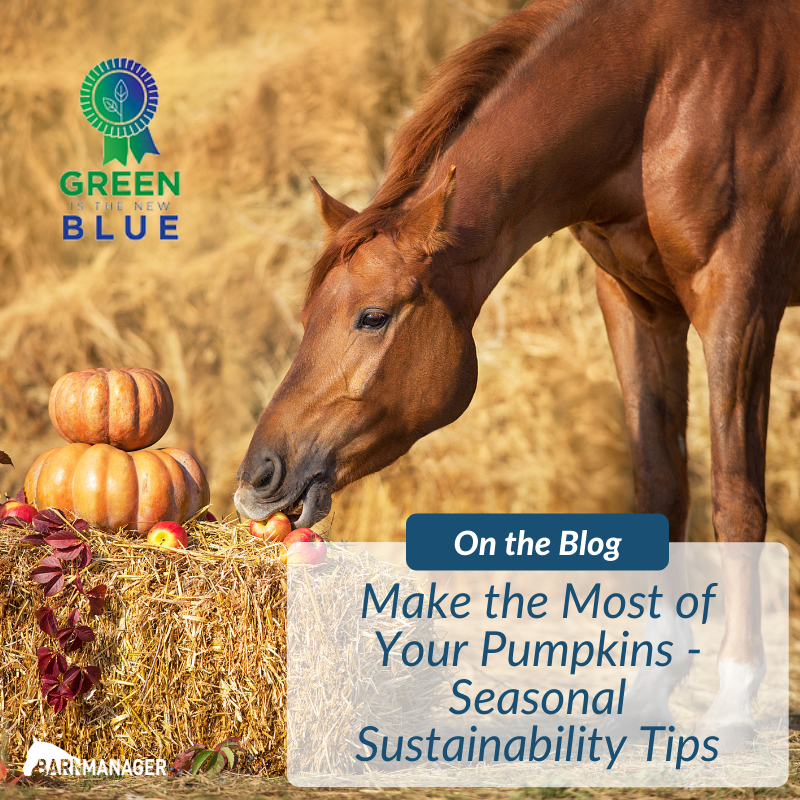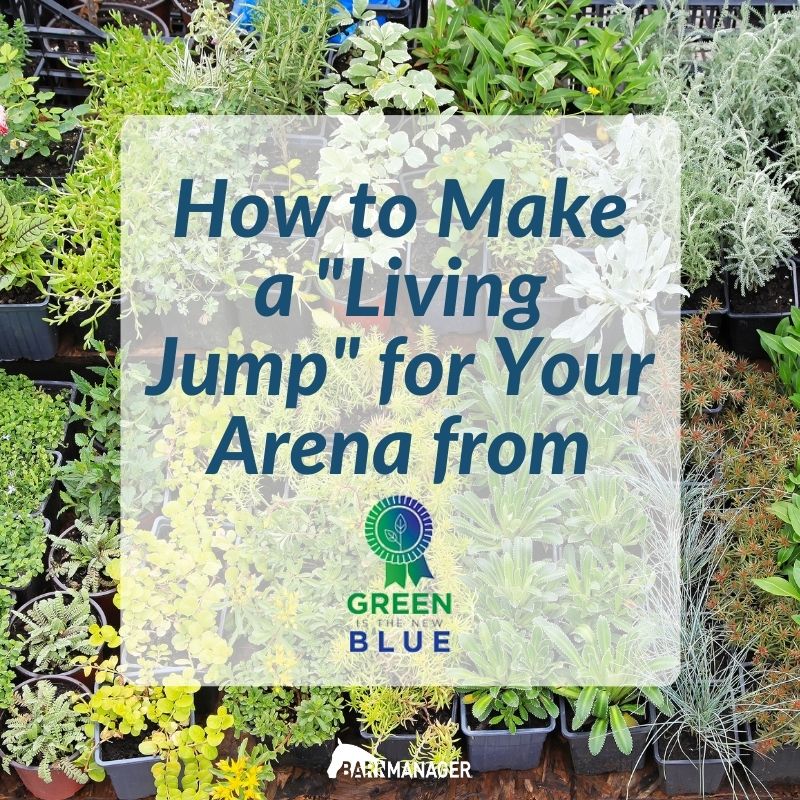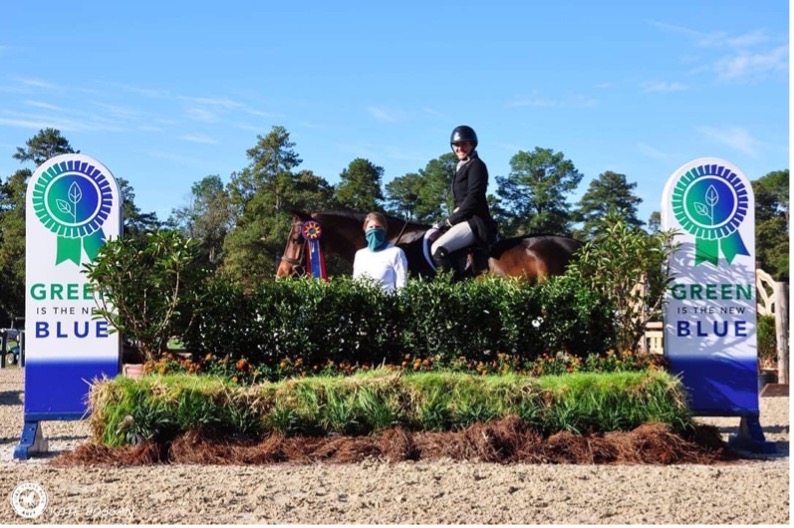Make the Most of Your Pumpkins – Seasonal Sustainability Tips

Written by BarnManager partner Green Is the New Blue
Pumpkins are a fall favorite, appearing on the porches of homes across the country from the start of fall to Thanksgiving. In addition to their decorative purpose, pumpkins are a healthy ingredient in many recipes and make a great snack for a variety of animals.
Unfortunately, there’s a dark side to the Halloween craze. An estimated 1.3 billion pounds of pumpkin are discarded into U.S. landfills each year, accounting for 65% of pumpkins produced. Decomposing waste trapped in landfills produces methane gas, contributing to climate change.
Thankfully there are many other ways to make the most of your pumpkins or sustainably dispose of them.
‘Tis the Season for Pumpkin Spice
With Thanksgiving coming up, there are so many amazing recipes for you to make the most of your Halloween pumpkins. Besides the stalk, almost every part of the pumpkin is edible, and they are a great source of vitamins, containing little fat or calories. Bake the seeds or skin for a crunchy snack, boil and strain the guts for a soup broth, or use the flesh to create a puree for pies, lattes, or ice cream.
A Tasty Treat for Our Furry Friends
Did you know that orange pumpkins, including the seeds, are also safe for horses to eat? If you plan to feed it raw, make sure to cut it into small pieces to avoid choking. It is recommended to feed no more than one cup per day. Even better, there are plenty of recipes to bake your own dog and horse treats. Jar your treats and store them for a tasty pumpkin treat any time throughout the year.
Pumpkin spice may or may not be your favorite seasonal treat, but it sure is appreciated by farm animals and wildlife. If you have pumpkins you don’t want to cook, reach out to a local animal sanctuary to see if they are interested in donations. Pumpkin is an enticing snack for pigs, goats, sheep, and many species of birds like chicken and ducks. As always, do not feed farm animals without permission from the owner for the animal’s health and safety.
Compost Your Pumpkin
The next best option is to compost your pumpkin. Make sure to remove the seeds, or your compost pile may become a pumpkin patch next season. Whole pumpkins can take a long time to compost, so break it into a few pieces before tossing it in.
The Last Resort – Disposal
If you cannot do any of the above, or simply do not have time, we understand you need a simple way to dispose of your pumpkin. Please do not dispose of your pumpkin in a landfill. Instead, dispose of a pumpkin in the same manner that yard debris is dealt with in your municipality. For more information about how to dispose of yard debris, contact your local Department of Public Works.
Green Is the New Blue would like to wish everyone a wonderful season heading into Thanksgiving. We are so thankful for all who follow us and help us strive for a Sustainable Sport.
Have questions about utilizing BarnManager or want to give it a try for yourself? Request a live demo here!

